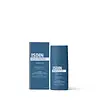What's inside
What's inside
 Key Ingredients
Key Ingredients

 Benefits
Benefits

 Concerns
Concerns

No concerns
 Ingredients Side-by-side
Ingredients Side-by-side

Water
Skin ConditioningEthylhexyl Isononanoate
EmollientGlycerin
HumectantIsononyl Isononanoate
EmollientPropanediol
SolventHordeum Distichon Extract
Skin ProtectingErgothioneine
AntioxidantSodium Hyaluronate
HumectantPhellodendron Amurense Bark Extract
Skin ConditioningSantalum Album Extract
CleansingPlankton Extract
Skin ConditioningArabidopsis Thaliana Extract
AntioxidantEvodia Rutaecarpa Fruit Extract
Skin ConditioningLecithin
EmollientMicrococcus Lysate
Skin ConditioningButylene Glycol
HumectantAcrylates/C10-30 Alkyl Acrylate Crosspolymer
Emulsion StabilisingCarbomer
Emulsion StabilisingBHT
AntioxidantDisodium EDTA
Phenoxyethanol
PreservativeEthylhexylglycerin
Skin ConditioningSodium Hydroxide
BufferingWater, Ethylhexyl Isononanoate, Glycerin, Isononyl Isononanoate, Propanediol, Hordeum Distichon Extract, Ergothioneine, Sodium Hyaluronate, Phellodendron Amurense Bark Extract, Santalum Album Extract, Plankton Extract, Arabidopsis Thaliana Extract, Evodia Rutaecarpa Fruit Extract, Lecithin, Micrococcus Lysate, Butylene Glycol, Acrylates/C10-30 Alkyl Acrylate Crosspolymer, Carbomer, BHT, Disodium EDTA, Phenoxyethanol, Ethylhexylglycerin, Sodium Hydroxide
Water
Skin ConditioningPropanediol
SolventNiacinamide
SmoothingGlycerin
HumectantAlcohol Denat.
AntimicrobialPentylene Glycol
Skin ConditioningHydrogenated Lecithin
EmulsifyingCaprylyl Glycol
EmollientPhenylpropanol
MaskingBakuchiol
AntimicrobialTocopheryl Acetate
AntioxidantAllantoin
Skin ConditioningMannitol
HumectantPhosphatidylcholine
EmulsifyingTetrasodium Glutamate Diacetate
Melatonin
AntioxidantSphingomonas Ferment Extract
Skin ConditioningDiosmine
AntioxidantCitric Acid
BufferingDecyl Glucoside
CleansingCetyl Alcohol
EmollientPotassium Sorbate
PreservativeSodium Benzoate
MaskingLecithin
EmollientMicrococcus Lysate
Skin ConditioningXanthan Gum
EmulsifyingHydroxyacetophenone
AntioxidantPhenethyl Alcohol
MaskingSodium Chloride
MaskingTocopherol
AntioxidantWater, Propanediol, Niacinamide, Glycerin, Alcohol Denat., Pentylene Glycol, Hydrogenated Lecithin, Caprylyl Glycol, Phenylpropanol, Bakuchiol, Tocopheryl Acetate, Allantoin, Mannitol, Phosphatidylcholine, Tetrasodium Glutamate Diacetate, Melatonin, Sphingomonas Ferment Extract, Diosmine, Citric Acid, Decyl Glucoside, Cetyl Alcohol, Potassium Sorbate, Sodium Benzoate, Lecithin, Micrococcus Lysate, Xanthan Gum, Hydroxyacetophenone, Phenethyl Alcohol, Sodium Chloride, Tocopherol
 Reviews
Reviews

Ingredients Explained
These ingredients are found in both products.
Ingredients higher up in an ingredient list are typically present in a larger amount.
Glycerin is already naturally found in your skin. It helps moisturize and protect your skin.
A study from 2016 found glycerin to be more effective as a humectant than AHAs and hyaluronic acid.
As a humectant, it helps the skin stay hydrated by pulling moisture to your skin. The low molecular weight of glycerin allows it to pull moisture into the deeper layers of your skin.
Hydrated skin improves your skin barrier; Your skin barrier helps protect against irritants and bacteria.
Glycerin has also been found to have antimicrobial and antiviral properties. Due to these properties, glycerin is often used in wound and burn treatments.
In cosmetics, glycerin is usually derived from plants such as soybean or palm. However, it can also be sourced from animals, such as tallow or animal fat.
This ingredient is organic, colorless, odorless, and non-toxic.
Glycerin is the name for this ingredient in American English. British English uses Glycerol/Glycerine.
Learn more about GlycerinLecithin is a term for a group of substances found in the cell membranes of plants, animals, and humans. They are made up of mixture of phospholipids.
This ingredient has emollient and emulsifying properties.
As an emollient, lecithen helps soften the skin and creates a barrier to keep moisture in.
As an emulsifier, it also helps prevent water and oil ingredients from separating. Lecithin can also help ingredients be better absorbed by the skin.
This is because the phospholipids in lecithin produce liposomes. Liposomes help other ingredients get through the skin barrier.
Depending on the source of this ingredient, lecithin may not be fungal acne safe. This is because some sources of lecithin come from soybean oil, which may feed the malassezia yeast that feeds fungal acne.
We recommend reaching out to the brand you are purchasing from to inquire about the source of their lecithin.
Some other names for this ingredient include soy lecithin and deoiled soy lecithin.
Learn more about LecithinWe don't have a description for Micrococcus Lysate yet.
Propanediol is an all-star ingredient. It softens, hydrates, and smooths the skin.
It’s often used to:
Propanediol is not likely to cause sensitivity and considered safe to use. It is derived from corn or petroleum with a clear color and no scent.
Learn more about PropanediolWater. It's the most common cosmetic ingredient of all. You'll usually see it at the top of ingredient lists, meaning that it makes up the largest part of the product.
So why is it so popular? Water most often acts as a solvent - this means that it helps dissolve other ingredients into the formulation.
You'll also recognize water as that liquid we all need to stay alive. If you see this, drink a glass of water. Stay hydrated!
Learn more about Water